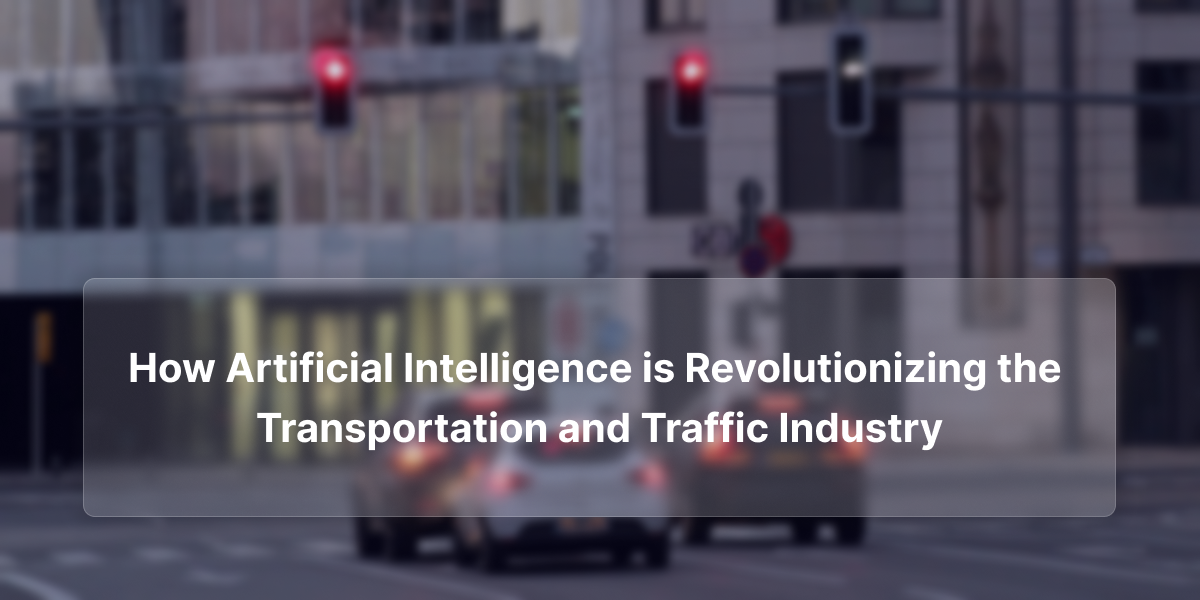Artificial Intelligence (AI) is no longer a futuristic concept — it’s driving real-world transformation in the way we move, travel, and manage transportation systems. From intelligent traffic lights and smart navigation systems to autonomous vehicles and predictive maintenance, AI is rapidly reshaping the global transportation and traffic industry. This revolution is not only improving efficiency but also making our roads safer, cleaner, and more sustainable.
Smarter Traffic Management Systems
Urban areas across the world face one of the biggest challenges — traffic congestion. Traditional traffic management systems rely on fixed timers and manual adjustments, which are often inefficient. AI-powered systems, however, use real-time data from cameras, sensors, and GPS to analyze traffic flow and automatically adjust signals to reduce congestion.
Cities like Singapore, Dubai, and Los Angeles are already using AI to predict and manage traffic patterns, resulting in shorter commute times, lower fuel consumption, and reduced emissions.
Autonomous Vehicles – The Road to the Future
Self-driving cars are perhaps the most visible example of AI in the transportation industry. Using machine learning algorithms, computer vision, and sensor fusion, autonomous vehicles can make decisions faster and more accurately than humans.
These AI-driven vehicles are designed to recognize traffic signals, pedestrians, and road signs while adapting to changing environments in real time. The ultimate goal is to create safer roads by minimizing human error — a major cause of traffic accidents worldwide.
Predictive Maintenance and Smart Fleet Management
AI is also transforming how commercial fleets and public transport systems operate. Predictive maintenance powered by AI helps detect potential issues in vehicles before they cause breakdowns, saving time and costs.
Fleet managers can use AI-driven analytics to optimize fuel efficiency, manage routes, and even monitor driver behavior. This proactive approach not only reduces downtime but also extends the lifespan of vehicles and improves operational efficiency.
AI in Public Transportation
Public transportation systems in major cities are increasingly adopting AI to enhance passenger experience. From route optimization to real-time crowd management, AI is helping authorities provide faster and more reliable services.
For instance, AI algorithms can predict peak hours and adjust schedules accordingly, ensuring better resource allocation. Passengers also benefit from AI chatbots and mobile applications that provide live updates on routes, traffic, and delays.
Enhancing Road Safety Through AI
Safety remains a top priority in transportation, and AI is playing a crucial role in making roads safer. Advanced Driver Assistance Systems (ADAS) powered by AI can detect fatigue, distraction, and collision risks — alerting drivers before accidents occur.
Furthermore, AI-based surveillance and monitoring tools help authorities analyze accident data, identify high-risk zones, and improve infrastructure planning. The integration of AI with IoT devices and connected vehicles is creating a network of smarter, safer roads.
The Future of AI in Transportation
The next phase of AI in transportation will bring even deeper integration with technologies like 5G, Internet of Things (IoT), and edge computing. Real-time vehicle-to-vehicle (V2V) and vehicle-to-infrastructure (V2I) communication will make traffic management more dynamic and adaptive.
As AI continues to evolve, we can expect fully autonomous logistics chains, intelligent mobility-as-a-service (MaaS) platforms, and eco-friendly transport solutions that redefine urban mobility.

